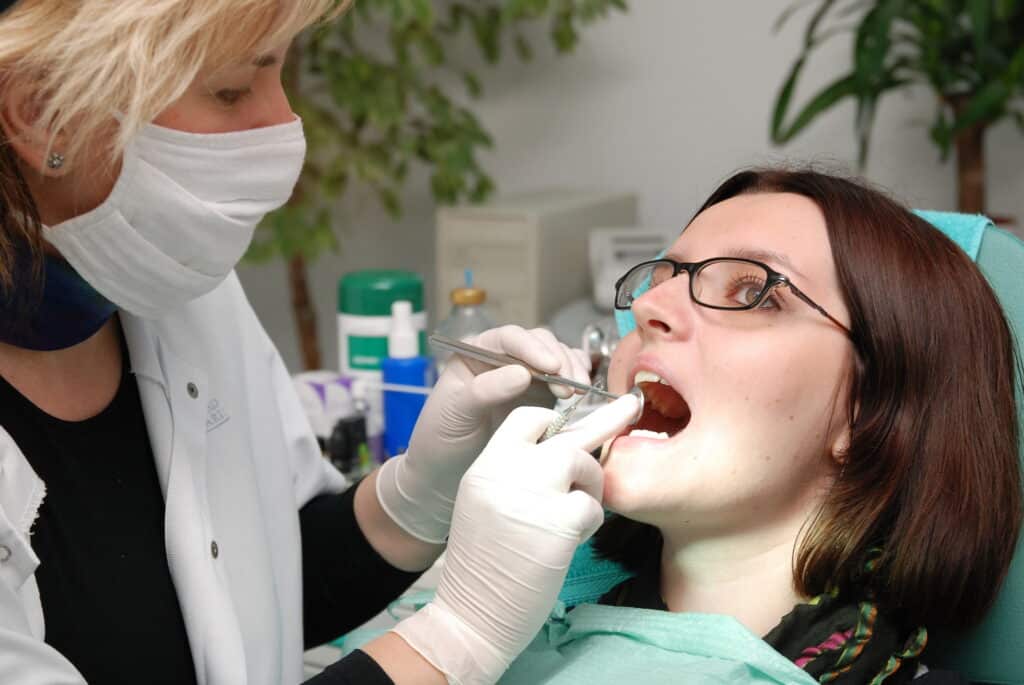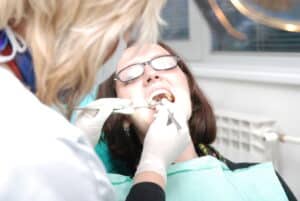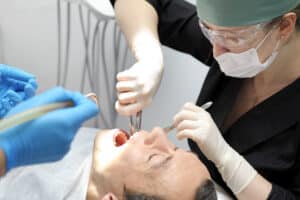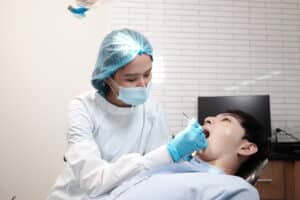
August 6, 2025
Wondering what to eat after tooth extraction? You’re not alone. Whether it’s your first time dealing with oral surgery or you’ve experienced it before, the process can feel overwhelming. Knowing what to eat can make a big difference in how well and how quickly you heal. Your food choices in the hours and days after a dental extraction are crucial. They directly affect your comfort, recovery time, and risk of complications.
The area where the tooth was removed needs time to clot and close. The wrong foods can dislodge that clot, delay healing, or irritate your gums. On the other hand, the right foods will support healing, reduce inflammation, and help you get back to normal with fewer setbacks.
This guide breaks down exactly what to eat at every stage of recovery. We’ll cover the best soft foods to stick to, what to avoid, how to deal with cravings, and when it’s time to call your provider. If you’ve just had a tooth removed and aren’t sure where to start, don’t worry. This practical guide will walk you through each step of your post-extraction diet.
First 24 Hours: Foods That Help

The first 24 hours after a tooth extraction are the most delicate. Your body begins forming a protective blood clot where the tooth was removed, and that clot is essential for proper healing. What you eat during this time can either support or slow down the healing process.
Stick to soft, cool, and non-acidic foods. Think applesauce, plain yogurt, mashed potatoes, cottage cheese, and cold soups like pureed vegetable or broth-based options. These choices are gentle on the area and easy to swallow without creating pressure that could disturb the clot.
Avoid anything hot, spicy, crunchy, or sticky. Hot foods in particular can increase blood flow to the area, which may lead to bleeding or discomfort. Foods that require chewing can also shift or dislodge the clot entirely.
Proper food choices are especially important if you’re recovering from an extracted wisdom tooth. Healing in that area may take longer and carries a higher risk of complications if it’s not handled carefully.
If you’re unsure whether a food is safe, ask yourself if it requires chewing or has sharp edges. When in doubt, go with something smooth and cool. This simple approach can make the difference between a smooth recovery and a painful setback.
Day 2-7: Easing Into a Gentle Diet
Once the first day has passed, your mouth begins to feel a little more stable. During days two through seven, you can slowly reintroduce warm, soft foods that provide more nourishment without putting strain on the healing site.
Soups that are warm but not hot can be a great option, especially if they include blended vegetables or soft noodles. Scrambled eggs, soft rice, mashed sweet potatoes, and finely cooked pasta are also safe choices. Smoothies are ideal too, but make sure to use a spoon instead of a straw. Suction from straws can still dislodge the clot and interrupt healing.
Chew carefully and try to use the opposite side of your mouth whenever possible. Even if your stitches feel secure, applying pressure to the extraction site can delay recovery or cause discomfort.
If you had an emergency tooth extraction, it might take longer than usual for your mouth to feel normal again. Emergency cases often cause more trauma or swelling, so you may need to eat soft foods for a few extra days.
Pay attention to how your mouth feels. If eating something causes pain, wait a day and try again. Healing happens in phases, and your diet should follow your comfort level every step of the way.
Foods to Absolutely Avoid After Tooth Extraction
As your mouth begins to heal, following a proper post-tooth extraction diet is crucial not just for knowing what to eat, but also for understanding what to avoid. Certain foods and habits can slow down recovery or even lead to painful complications like dry socket.
Stay away from crunchy foods such as chips, crackers, and raw vegetables, as these can scrape or press against the extraction site and dislodge the blood clot. Avoid seeds and small grains, which can get stuck in the wound. Spicy foods may irritate the area and cause stinging or inflammation.
Hot drinks like coffee or tea should be skipped in the first few days, especially when the site is still sensitive. Using straws is also risky because the suction can pull the clot loose and expose the socket.
Sugar and alcohol should be limited during the healing phase. Both can interfere with tissue repair and increase the risk of infection. Alcohol, in particular, can also react poorly with any prescribed pain medications.
To avoid accidentally irritating the area, eat slowly and mindfully. Rinse gently after meals with warm salt water unless your provider has given different instructions. The more careful you are in avoiding these triggers, the smoother your healing process will be.
How Diet Affects Tooth Extraction Healing: Signs to Watch

Your recovery diet plays a big role in how well you heal after a tooth extraction. Fortunately, your body gives you clear signs that things are either improving or going off track.
When your diet supports healing, you should notice steady progress each day. Swelling should go down, any minor bleeding should stop, and your appetite may start to return. Eating soft, nourishing foods that don’t disturb the extraction site helps your body stay on track.
On the other hand, certain warning signs can point to trouble. If you feel throbbing pain that gets worse instead of better, notice a foul taste or odor coming from the site, or see exposed bone, you may be dealing with dry socket. This is a painful condition that requires professional care.
If you’re local and notice signs like increased pain or swelling, reach out to a provider who handles tooth extraction in Marysville. Early intervention can prevent more serious problems and get your recovery back on track.
Paying attention to your body and adjusting your diet as needed will make the healing process much smoother and more comfortable.
Real Talk: Dealing With Cravings and Frustration
Let’s be honest, healing after a dental extraction isn’t just about following the rules. It’s also about dealing with the cravings that hit when your usual favorites are off the table. Missing that morning coffee? Craving something crunchy, salty, or sweet? You’re not alone.
The mental side of recovery can be surprisingly tough. After a few days of soft foods, even a slice of toast or a bite of pizza starts to sound amazing. But giving in too soon can set you back and make the healing process longer.
Instead of focusing on what you can’t have, try finding satisfying alternatives. Craving ice cream? Blend frozen bananas into a creamy, healthy treat. Missing soup with more substance? A warm broth bowl with soft noodles and finely shredded veggies can hit the spot. Want something savory? Try mashed sweet potatoes with a little seasoning or soft scrambled eggs.
Remind yourself that this phase is temporary. The better you stick to healing-friendly options now, the sooner you’ll be back to enjoying your full menu again without pain or setbacks.
Tooth Extraction Recovery on a Budget: Food and Cost Tips
Recovery after a tooth extraction isn’t just physical, it can also come with financial stress if complications arise. That’s why smart planning, both in terms of food and follow-up care, is one of the best ways to avoid unexpected expenses during the healing process.
Stocking up on soft, nourishing foods ahead of time is a smart move. It helps you avoid last-minute grocery trips or meals that might slow your recovery. Think soups, smoothies, yogurt, and soft-cooked grains. These options are affordable and support healing without adding risk.
Whether you’re healing from a routine procedure or dental extraction, your diet plays a crucial role in long-term recovery. Sticking to the right foods can prevent dry socket and other painful setbacks that may lead to extra visits or treatments.
It also helps to consider the full picture before your procedure. Ask about the estimated tooth extraction cost and what’s included in post-op care. Some offices may also explain teeth extraction charges in detail to help you plan ahead.
A little preparation goes a long way. Protecting your recovery with the right diet is one of the easiest and most cost-effective steps you can take.
Local Tip: Post-Op Care After Extraction in Marysville

While recovery guides can be helpful, nothing beats advice tailored to your specific situation. If you’ve recently had a tooth pulled, it’s important to stay in touch with your dental provider, not just for checkups, but to make sure your diet is supporting your healing properly.
Follow-up care is just as important as the foods you eat. Even if everything seems fine, your provider can spot signs of irritation or infection before they become more serious.
If you’ve recently had a tooth extraction in Marysville, your provider can offer personalized recovery and dietary advice. They can also help you decide when it’s safe to return to your normal eating habits and answer any questions about your healing progress.
Staying proactive during recovery makes a difference. Your mouth will thank you for it.
Recap: Your Diet Can Make or Break Your Recovery
Knowing what to eat after tooth extraction helps protect the healing site, ease discomfort, and get you back to normal faster. Your recovery doesn’t depend on medication alone following the best diet plan after tooth extraction surgery plays a big role in how quickly and comfortably you heal.
Soft, nourishing foods support clot formation, reduce irritation, and make it easier for your body to do its job. Good hydration is just as important. Drinking plenty of water (without using a straw) helps flush bacteria and keeps tissues healthy as they rebuild.
Follow your provider’s post-op instructions and stick to gentle foods. Avoiding anything that could disturb the site helps prevent painful setbacks like dry socket. If something feels off or you’re simply not sure what’s safe to eat it’s always better to call and ask.
Recovery takes patience, but with the right approach, it can go smoothly. Trust your body, follow the care plan, and don’t hesitate to lean on your provider for guidance.
Need Help With Your Recovery Plan? Trust Dentistry at Marysville
If you’re still unsure what to eat after tooth extraction, you’re not alone. Don’t hesitate to reach out for reassurance about your recovery. The team at Dentistry at Marysville is here to answer your questions and provide personalized guidance that fits your needs.
We offer gentle, affordable care for patients in the Marysville area, whether you’re preparing for a procedure or healing from one. A quick consultation can make your recovery smoother and more comfortable starting with the right food choices.
Contact us today to get the support you need.
New Patient Specials
New patients to Dentistry Marysville are invited to take advantage of one of our first-time visitor specials.
To claim the offer, screenshot or print the coupon and show it at your initial appointment.
$149 New Patient Special Plus $100 Off Your Second Office Visit*
*New patients only. A $369 value. Cannot be combined with other offers or insurance.
10% Off Cash Discount on All Dental Services*
*Cannot be combined with other offers or insurance.
$149 New Patient Special Plus Professional Teeth Whitening for ONLY $350*
*New patients only. Cannot be combined with other offers or insurance.
$89 New Patient Special* Limited Exam & X-rays
*New Patients Only. Cannot be combined with other offers or insurance.

